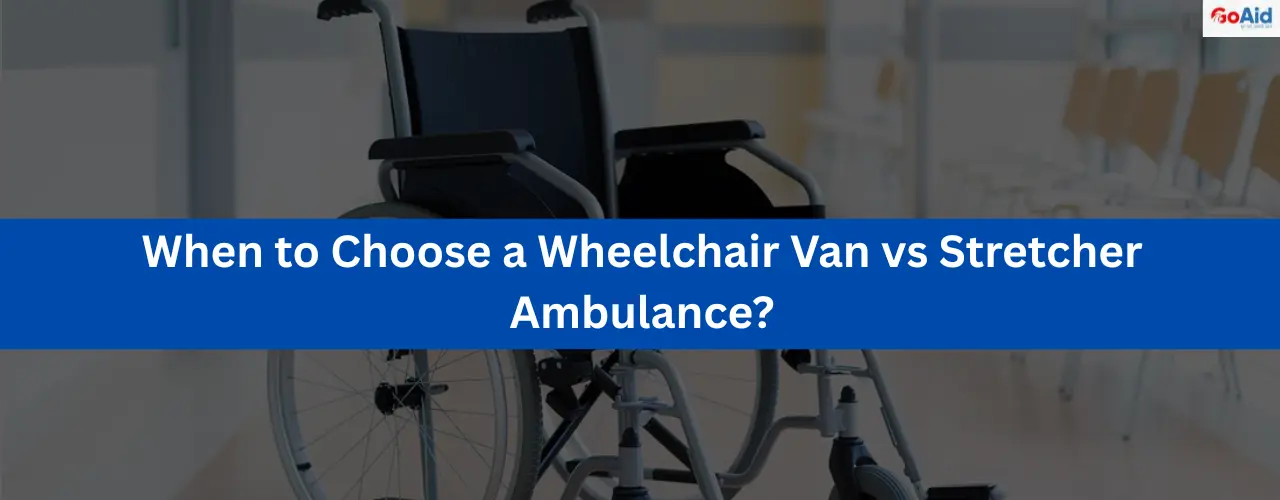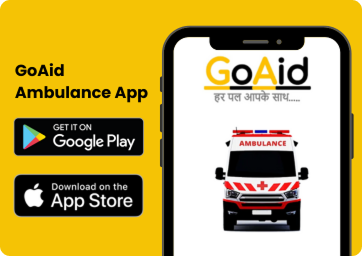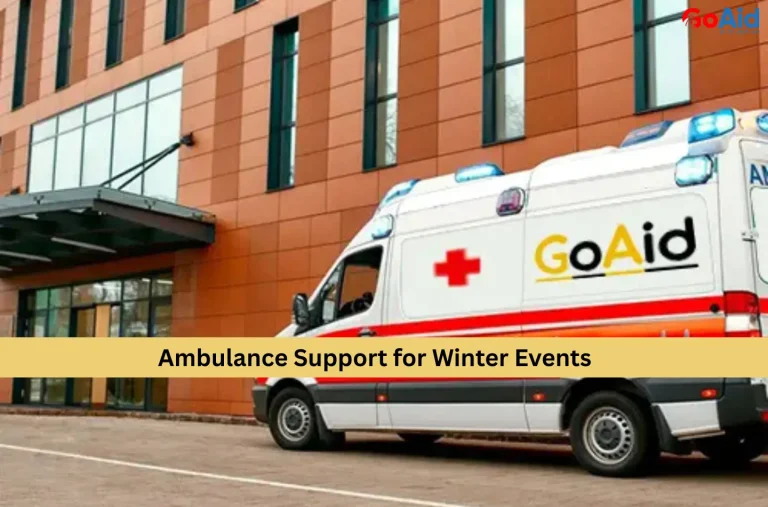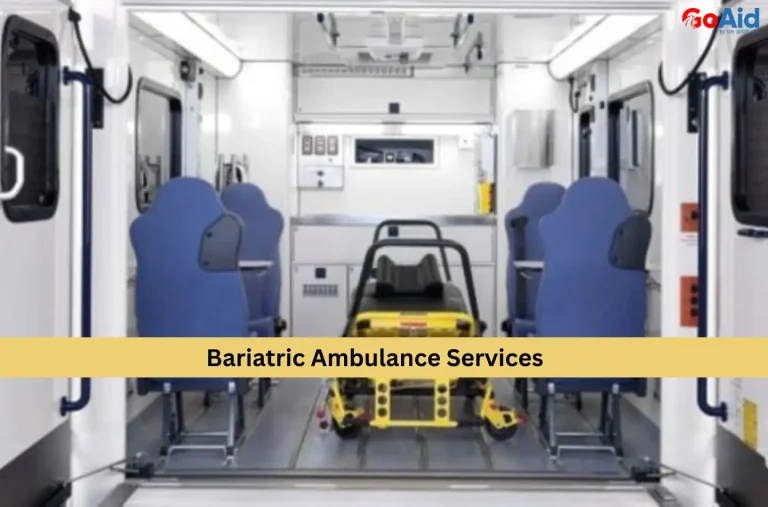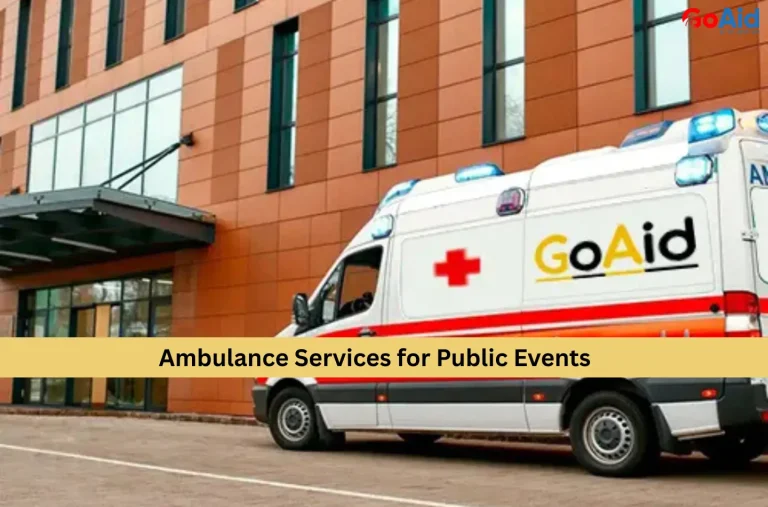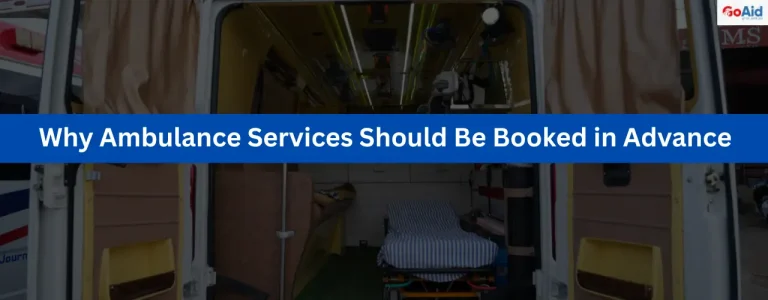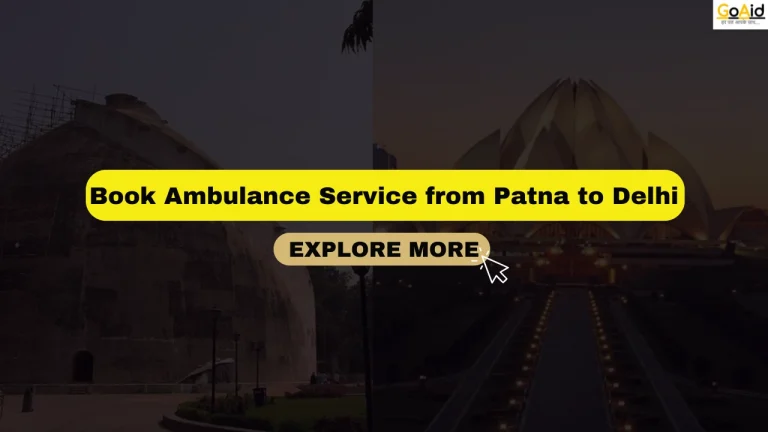In the world of medical transport, choosing between a wheelchair van and a stretcher ambulance depends entirely on the patient’s condition and mobility needs. Many people donŌĆÖt clearly understand when to choose a wheelchair van or when to choose a stretcher ambulance, which often leads to confusion during medical travel.
ThatŌĆÖs why knowing the difference between these two services is important. In this blog, weŌĆÖve explained what a wheelchair ambulance and stretcher ambulance are, their key differences, and how to decide which service suits your situation best. If you want to book the right transport for medical needs, read this blog till the end.
What is a Wheelchair Van?
A wheelchair van, also called a wheelchair ambulance, is a specialized vehicle designed to safely transport patients who use wheelchairs but do not require intensive medical attention. These vans are equipped with ramps or lifts to make boarding easy, along with seatbelts and anchor systems to secure the wheelchair during transit.┬Ā
They are ideal for individuals with mobility issues who can sit upright. GoAidŌĆÖs Wheelchair Vans are frequently used for routine check-ups, physiotherapy sessions, or hospital discharges, providing safe, reliable, and dignified non-emergency transport across cities with trained staff and convenient booking options.
What is a Stretcher Ambulance?
A stretcher ambulance is used for transporting patients who are bedridden or unable to sit in a wheelchair. These ambulances are equipped with medical stretchers, basic life support systems, oxygen supply, and trained medical staff.
GoAidŌĆÖs Stretcher Ambulances are ideal for non-emergency medical transport where patient stability, comfort, and support are essential, such as shifting from home to hospital or vice versa. Patients recovering from surgery, fractures, or chronic illness commonly use this service.┬Ā
It ensures safe horizontal transportation with proper care and attention throughout the journey, making it a vital service in patient mobility.
Key Differences Between Wheelchair Vans and Stretcher Ambulances
While both offer non-emergency patient transport, wheelchair vans and stretcher ambulances differ in structure, features, and usage. HereŌĆÖs a detailed comparison:
| Aspect | Wheelchair Vans | Stretcher Ambulances |
| Patient Position | Seated in a wheelchair | Lying flat on a stretcher |
| Mobility Condition | For patients who can sit upright | For patients unable to sit or walk |
| Equipment | Ramp/lift, wheelchair locks | Stretcher, oxygen, basic life support |
| Medical Staff | Usually assisted by a helper | Attended by trained paramedics |
| Ideal For | Elderly, disabled, post-therapy visits | Post-surgery, bedridden, critically ill patients |
| Cost | Generally more affordable | Slightly higher due to medical setup |
| Availability at GoAid | Yes, city-wide availability | Yes, with nationwide coverage |
| Comfort Level | Comfortable for seated transport | Designed for full medical care during transit |
| Booking Method | GoAid App or helpline | GoAid App or helpline |
When to Choose a Wheelchair Van?
Wheelchair vans are best for patients who can remain seated and need safe, assisted transport. Below are the ideal situations for when to choose a wheelchair van or wheelchair ambulance service:
1. Routine Medical Check-Ups
Patients needing transport to regular doctor visits, without urgent care, can safely travel via a wheelchair van, ensuring convenience and minimal physical stress.
2. Post-Surgery Follow-Up Visits
If the patient is recovering but able to sit upright, a wheelchair van offers a secure, comfortable option for hospital follow-ups.
3. Elderly Patient Transport
Elderly individuals with limited mobility benefit from wheelchair vans designed to accommodate comfort and accessibility.
4. Physiotherapy or Dialysis Sessions
Patients undergoing scheduled therapies that don’t require lying down can use a wheelchair ambulance for reliable and consistent travel.
5. Hospital Discharges
A wheelchair van is perfect for non-critical discharges where the patient can exit the hospital seated in a wheelchair.
6. Disability Transport Services
People with permanent or temporary disabilities who use wheelchairs find this the safest mode of medical transport.
7. Residential Care Transfers
Moving from one care facility to another or home while seated and stable is best done through a wheelchair van.
8. Community Events or Appointments
Wheelchair vans allow accessible transport for social or minor community activities involving disabled patients.
9. Airport or Railway Station Transfers
Some wheelchair users need accessible transportation to/from transit hubs; these vans provide support with minimal effort.
10. No Immediate Medical Risk
If there’s no medical emergency or need for on-board equipment, a wheelchair ambulance is an efficient and affordable option.
When to Choose a Stretcher Ambulance?
A stretcher ambulance is ideal when patients require horizontal positioning and medical monitoring. HereŌĆÖs when to choose stretcher ambulance services:
1. Post-Surgical Recovery
Patients who canŌĆÖt sit post-surgery and need rest while being moved should be transported using stretcher ambulances.
2. Severe Injury or Fracture
Patients with injuries that prevent them from sitting or moving comfortably require the stability and safety of a stretcher setup.
3. ICU or Oxygen Support Needed
If the patient needs oxygen or constant medical attention, stretcher ambulances offer necessary equipment and medical personnel.
4. Inter-City or Long-Distance Transport
For long-distance travel between hospitals or cities, stretcher ambulances ensure comfort and safety over extended durations.
5. Critical Medical Conditions
Patients with life-threatening or chronic conditions who cannot sit upright require stretcher ambulance support.
6. Bedridden Patient Transfers
Shifting a patient from home or hospice to a hospital (or vice versa) is best handled using a stretcher ambulance.
7. Emergency Observation Needed
If medical observation or first-aid support is needed during transport, GoAidŌĆÖs stretcher ambulance ensures supervision.
8. After ICU Discharges
Patients coming out of critical care often still need medical transport via stretcher with minimal disturbance.
9. Supportive Monitoring
Some non-emergency cases still require BP monitoring, IV drips, or trained support, making stretcher ambulances the right choice.
10. Patient Unable to Sit Due to Pain
Pain or conditions like spinal injury may prevent sitting, so lying flat in a stretcher ambulance is the safest solution.
Also Read: Why is GoAid the Best Option During a Medical Emergency?
How to Choose the Right Service for Your Needs?
Understanding patient condition and support requirements helps you decide between a wheelchair van and a stretcher ambulance. Consider the following:
1. PatientŌĆÖs Ability to Sit Upright
If the patient can sit without distress, a wheelchair van works; otherwise, opt for a stretcher ambulance.
2. Medical Equipment Requirement
Stretcher ambulances are better for patients needing oxygen, monitors, or medication during the ride.
3. Emergency vs. Routine Travel
Emergency conditions or unstable vitals call for a stretcher ambulance, while routine visits allow for wheelchair ambulance use.
4. Travel Distance
Longer distances often require stretcher ambulances for comfort and emergency readiness, especially between cities.
5. Mobility Limitations
Patients who canŌĆÖt move at all will be more secure in a stretcher, while partially mobile patients suit wheelchair transport.
6. Medical Supervision Needs
Need paramedics or nursing staff during travel? Choose a stretcher ambulance for complete care on the go.
7. Budget Constraints
Wheelchair vans are more cost-effective for non-critical needs. Choose wisely based on financial considerations.
8. Condition Stability
Unstable or post-ICU patients should always be moved in a stretcher ambulance with medical support.
9. Nature of Appointment
For therapy, check-ups, or consultations, a wheelchair ambulance is perfect; a stretcher suits hospital-to-hospital shifts or critical observation.
10. Availability and Support
GoAid provides both services with professional teams and nationwide availability, making it easy to choose and book as needed.
How GoAid Offers the Best Wheelchair and Stretcher Ambulance Services?
GoAid stands out as a trusted name in providing both wheelchair ambulances and stretcher ambulance services across India. With a fleet equipped with the latest medical support systems and GPS tracking, GoAid ensures timely, safe, and comfortable patient transport.┬Ā
Their wheelchair vans are designed for patients with limited mobility who require seated travel, while their stretcher ambulances cater to bedridden or critically ill patients needing advanced medical care during transit.
Whether itŌĆÖs a scheduled hospital visit or an inter-city transfer, GoAidŌĆÖs trained medical staff and 24/7 availability guarantee seamless service. For any situation ŌĆö from when to choose a wheelchair van to when to choose a stretcher ambulance ŌĆö GoAid offers the best, most reliable solution.
Book Ambulance: GoAid Ambulance Service
Conclusion to the Wheelchair Van Vs Stretcher Ambulance
In conclusion, understanding the key differences between a wheelchair van and a stretcher ambulance is essential when arranging medical transportation. Depending on the patientŌĆÖs condition, mobility, and medical requirements, one service will be better suited than the other.
GoAid simplifies this decision by offering expertly managed wheelchair ambulance and stretcher ambulance services, ensuring comfort, safety, and speed. Always consider the nature of the transport need to choose wisely. If you have any other questions or need help choosing the right ambulance type, feel free to ask in the comment box below.
FAQs related to the Wheelchair Van Vs Stretcher Ambulance
Question 1: What is a wheelchair ambulance?
Answer: A wheelchair ambulance is a specially designed van that safely transports patients who are mobile in wheelchairs but require assistance and secure transport.
Question 2: When should I choose a wheelchair van?
Answer: Choose a wheelchair van for routine medical visits, post-surgery checkups, or when the patient can sit upright without medical complications.
Question 3: What is a stretcher ambulance?
Answer: A stretcher ambulance is equipped with a stretcher bed, oxygen, and medical support, ideal for bedridden, injured, or critically ill patients needing care during transit.
Question 4: When to choose a stretcher ambulance?
Answer: Opt for a stretcher ambulance when the patient is immobile, in pain, needs constant medical monitoring, or is recovering from major surgery.
Question 5: Can GoAid provide both types of ambulances?
Answer: Yes, GoAid Ambulance offers both wheelchair ambulance and stretcher ambulance services with trained staff and round-the-clock availability.
Question 6: Are wheelchair vans cost-effective?
Answer: Yes, wheelchair vans are more affordable than stretcher ambulances and ideal for non-critical, scheduled patient transport.
Question 7: Is a stretcher ambulance available for long-distance travel?
Answer: Absolutely, GoAidŌĆÖs stretcher ambulance services are well-equipped for intercity or long-distance patient transfers with full medical support.
Question 8: What safety features are present in wheelchair vans?
Answer: Wheelchair vans include secure seating, ramps or lifts, seat belts, and trained personnel to ensure safe transport for mobility-challenged individuals.
Question 9: Can I pre-book a wheelchair or stretcher ambulance with GoAid?
Answer: Yes, GoAid allows easy pre-booking through its website or app, letting you schedule a wheelchair or stretcher ambulance as per need.
Question 10: How do I decide between a wheelchair and a stretcher ambulance?
Answer: Assess the patient’s mobility, medical needs, and comfort. For upright sitting patients, choose a wheelchair van; for bedridden or critical cases, go for a stretcher ambulance.

